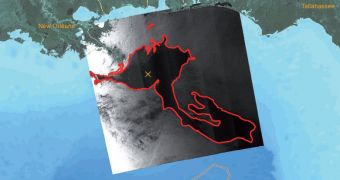Between January and June of each year, bluefin tuna populations swim in the Gulf of Mexico to breed. This year, they were caught unprepared by the Deepwater Horizon disaster, and decimated.
Investigators say that the oil spill, which began in late April, surprised the tuna as they were spawning in the waters of the Gulf. The extent of the damage is now being assessed from orbit.
Bluefin tuna are among the most impressive fish out there, if only through their impressive size. They can grow to be as large as a small car. They are also an important food source.
But stocks have been dropping worldwide, as environmentalists have been militating to classify the species as endangered. With the April disaster, global populations are bound to drop even more.
Official statistics show that, on any given day, the ruptured BP wellhead spewed out as much as 10 million liters of crude oil into the surrounding waters.
This was happening as the bluefin tuna were reaching the peak of their spawning season, which took place in April and May.
When they arrive in the Gulf, tuna population use one of two breeding grounds, one of them in the northwest and one in the northeast. The latter overlaps perfectly on the area affected by the oil spill.
In order to know what types of protective measures to devise, experts at the non-profit organization Ocean Foundation had to know the habitats that had been affected most by the oil slick.
The European Space Agency (ESA) provided support for this, by making available radar data collected with its Envisat satellites, as well as with other spacecraft.
The maps, which were updated every week, mostly showed the location, shape and size of the spill, and also offered estimates of where it may be heading.
“This analysis will help us and our colleagues elevate our understanding of these impacts to another level and guide the development of strong policy recommendations,” explains Dr David Guggenheim.
“In addition, this analysis and its approach represents a next-generation tool that can help equip researchers and decision-makers should we face another similar environmental disaster in the future,” the Ocean Foundation expert adds.
Now, more than 3 months after the wellheads have been covered up, ESA is still contributing to providing insight into the effects of the oil spill.

 14 DAY TRIAL //
14 DAY TRIAL //